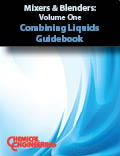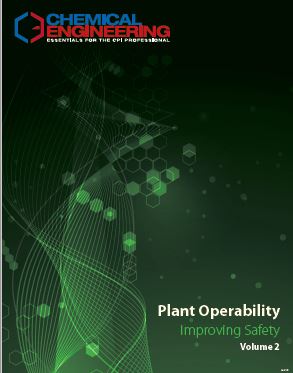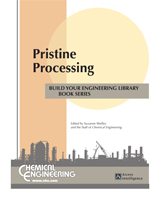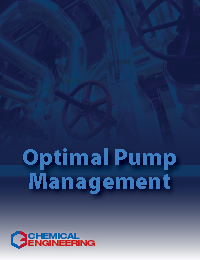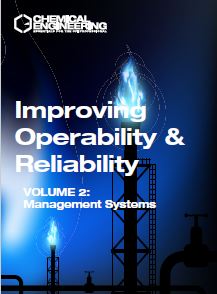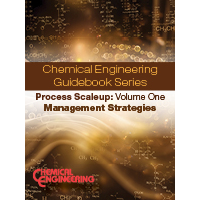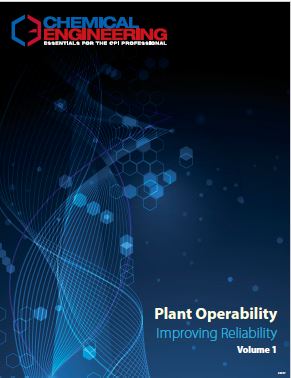
The quest to improve plant operability — in terms of maximzing asset reliability and minimizing equipment downtime — is a daily challenge for facility owners and operators in the chemical process industries (CPI).
This Chemical Engineering guidebook contains a collection of tutorial-style engineering articles covering a broad array of equipment types. These articles, drawn from the pages of Chemical Engineering magazine, provide practical guidance on the selection, operation and maintenance, and troubleshooting of such workhorse equipment components as pumps, valves, burners, boilers, compressors, filtration systems and more.
The guidebook focuses on maximizing the reliability of key plant utilities such as compressed-air production, steam production and water treatment, and includes tips for successfully handling powders and bulk solids to avoid operating problems.
Several articles provide guidance for proper material selection to improve process compatibility and reduce corrosion, and discusses techniques for monitoring equipment vibration and carrying out comprehensive preventive maintenance programs. These articles were published between 2010 and 2018.
Delivered in a PDF, 232 pages.
Articles Include:
Preventing Flow Stoppages in Powder Handling Processes• Predicting powder flow behavior is important to successful solids-handling processes. Provided here is a review of shearcell testing and how the technique can be used to predict arching, ratholing and other behaviors
Effective Agitator Operation and Maintenance• Agitators play key roles in chemical processing. Their proper operation and maintenance can improve process reliability, leading to reduced downtime and costs
Get the Most Out of an Owner-Contractor Alliance• This article provides guidance for setting up a robust alliance between plant owners and EPC contractors to minimize risk and maximize synergies during complex, capital-intensive projects
PVDF: A Fluoropolymer for Chemical Challenges.• When it comes to selecting materials of construction, keep in mind the favorable properties of fluoropolymers for corrosive service
A Primer on Compressor Design • From initial conceptualization to final calculation, designing compressors requires not only engineering intuition and robust simulation tools, but also a bit of creativity
Control Engineering for Chemical Engineers• Chemical engineers who are aware of process control requirements and challenges are in a position to improve process designs
Optimizing Analysis for Spray-Drying• Precise control over spray-drying processes can be enabled by modern measurement approaches that provide information on particle size and shape in realtime
Maximizing Fan Efficiency
CPI Machinery: Commissioning, Startup and Piping• Practical notes on installation, piping, support, layout, nozzleloads, stress analysis, precommissioning, commissioning, startup and operation of rotating machinery
Optimization of a Steam Network• Proper configuration of steam-turbine drivers affects power generation in petroleum refineries
Bulk Solids: Optimizing Screw Conveyors• Despite their apparent simplicity, the complexity of these conveying systems demands proper design and an understanding of the underlying principles
Improvements in DP Level Measurement• Differential-pressure (DP) level measurements are widely used in chemical and petrochemical facilities, thanks to their reliability and ease of use. Recent advances are making them even more reliable and easy to use
Get the Most out of Vibration Analysis• By listening to the messages your components are sending, you will be better able to assess the status of your machinery and take action to address problems
The Impact of Off-BEP Pump Operation
Project Optimization Through Engineering• Follow these practical recommendations to reduce capital outlay and operating costs, deliver shorter schedules and improve design quality
Gas Turbines: Design and Operating Considerations• Follow these engineering recommendations to improve gas turbine operation and performance while reducing operating costs
INDUSTRIAL CONTROL SYSTEMS SECURITY: The Owner-Operator’s Challenge• Addressing the cybersecurity of industrial control systems requires a collaborative response, beginning with a realistic assessment
Steam Balancing: The First Step in Steam Optimization• The ability to achieve an optimal steam balance can help to improve the overall thermal cycle efficiency of any steamproduction system
Mitigate Corrosion in Condensate-Return System• Understanding the chemistry behind corrosion in condensatereturn systems can aid in selecting and properly employing the best mitigation technique
Steel Corrosion
Rotating Machines: Digital Technologies to Enable Predictive Maintenance• Predictive maintenance for rotating machinery is gaining prominence as plant operators embrace analytics and learn how to approach their operating benchmarks
Guidelines for Designing a Compressed Air System• With the proper knowledge, engineers can work alongside compressor manufacturers to ensure that an optimal air compression system is installedDetermining Friction Factors in Turbulent Pipe Flow• Several approaches are reviewed for calculating fluid-flow friction factors in fluid mechanics problems using the Colebrook equation
Five Steps to Replacing Aged Heat-Transfer Fluid• Follow these guidelines to help ensure efficient operation of heat transfer systems, and proper exchange and disposal of aged fluids
Fired Heaters: Best Practices for the Control of Fuel Gas• Adopt these practices to ensure new project success, and to achieve safe control and reliable, efficient operation going forward
Managing Large Chemical Plant Startups• Prudent planning and scheduling during a project’s front end can lead to more expedient commissioning and startup activities
Connecting Operations Personnel to Reliability Efforts• Seven methodologies are described to help operations staff take greater ownership of asset performance
Performance Trends of Top Performers in the CPI• Focusing on a ‘reliability culture,’ mechanical availability and optimum costs leads to top performance
Precision Grouting: Setting the Foundation for Equipment Reliability• A clear understanding of grout material properties is important to ensure that equipment is effectively protected against vibration and misalignment
Activated Sludge Process
Critical Connections Demand Certainty• Understanding bolts’ behavior during routine tightening procedures helps to ensure leak-free, reliable operations
Bulk solids: Operating Direct-Contact Heat Exchangers• Such units provide advantages over heated or watercooled screws, fluidized beds and rotating drums for heating and cooling bulk solids
Industrial Insulation Systems: Material Selection Factors• To provide the desired functions while being exposed to harsh environments, insulation material should be carefully selected and specified to meet the design goals
Pneumatic Conveying: Optimal System Design, Operation and Control• Numerous strategies and options for both dilute- and densephase conveying systems are presented here
Pipe Insulation: Finding the Optimal Thickness• Avoid tedious numerical calculation by using this quick, shortcut method
Optimizing Flare Operation Through Proper Design• Flare problems are often caused by the seal systems that are designed to control air ingress. Follow these troubleshooting guidelines to improve design and ensuresafe, reliable flare operation
Industrial Adsorbents
Filtration Process Design and Optimization
Smart Water- Management Strategies: The Time is Now• Considering water-management strategies as a central component of infrastructure design at industrial facilities will unlock cost savings throughout the operation
Treating Boiler Feedwater for Reliable Operation• These key elements of internal boiler feedwater (BFW) treatment will help avoid boiler tube failures due to scale and pitting
Microbial Control in Cooling Water• Three chlorine-based strategies for controlling microbial load in industrial cooling water are evaluated here
Troubleshooting Tube-Deterioration Mechanisms in Direct-Fired Heaters• A practical step-by-step guide for reducing future tube failure

